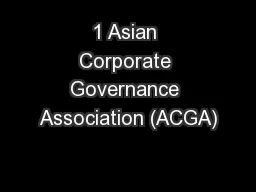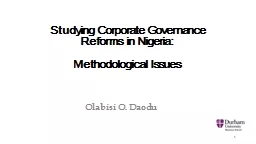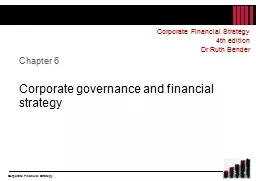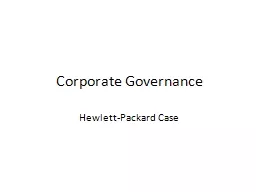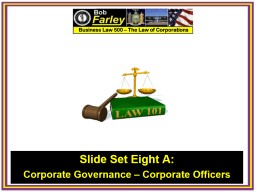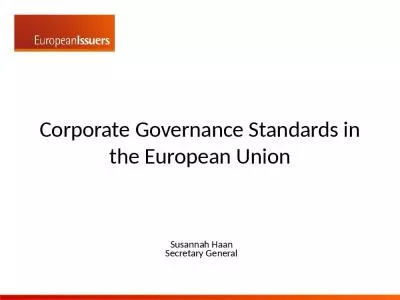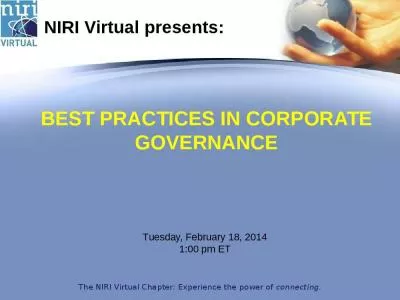Chapter 6 Corporate governance and financial
Author : calandra-battersby | Published Date : 2025-06-23
Description: Chapter 6 Corporate governance and financial strategy Corporate Financial Strategy 4th edition Dr Ruth Bender Corporate governance and financial strategy contents Learning objectives Illustrative stages in the ownership life cycle Changing
Presentation Embed Code
Download Presentation
Download
Presentation The PPT/PDF document
"Chapter 6 Corporate governance and financial" is the property of its rightful owner.
Permission is granted to download and print the materials on this website for personal, non-commercial use only,
and to display it on your personal computer provided you do not modify the materials and that you retain all
copyright notices contained in the materials. By downloading content from our website, you accept the terms of
this agreement.
Transcript:Chapter 6 Corporate governance and financial:
Chapter 6 Corporate governance and financial strategy Corporate Financial Strategy 4th edition Dr Ruth Bender Corporate governance and financial strategy: contents Learning objectives Illustrative stages in the ownership life cycle Changing role of corporate governance over the ownership life cycle Indicative attributes of lack of independence in a director Problems with performance measures in executive pay EPS growth as a target in different growth scenarios Control enhancement mechanisms (CEMs) Control enhancement mechanisms (CEMs) Structures of control: the Pyramid Structures of control: Indirect control Case study 6.3: Hollinger control structure Corporate governance mechanisms and the minority shareholder Corporate governance mechanisms and the lender Corporate responsibility and the drivers of value 2 Learning objectives Apply a model to determine which aspects of corporate governance are most relevant at different stages of a company’s life cycle. Recognize the limitations of different types of executive remuneration plan, and evaluate how their performance measures link to the creation of value. Understand and explain how differences in corporate governance regimes can affect the financing strategies of companies in those jurisdictions. Contrast the different mechanisms by which block-holders can control a company, and explain the impact, positive and negative, that this can have. Explain why stakeholders merit consideration in a discussion of financial strategy. 3 Illustrative stages in the ownership life cycle 4 Agency problems and accountabilities increase lower down the pyramid Changing role of corporate governance over the ownership lifecycle 5 Indicative attributes of lack of independence in a director Has been an employee or executive of the company or a related company in the past X years. Is a close family member of a director of the company or a related company. Has had a significant business relationship with the company in the past Y years. Is a professional adviser to the company, or has some other business relationship. Represents a block shareholder or a major lender to the company, or has significant business transactions with same. Holds cross-directorships with other members of the company’s board. Participates in the company’s pension scheme or share option scheme. Has served on the board continuously for more than Z years 6 Problems with performance measures in executive pay 7 EPS growth as a target in different growth scenarios 8 eps growth of RPI+X% is a commonly used base measure eps growth does not necessarily lead to shareholder value! Control enhancement mechanisms (CEMs) CEMs which work by giving block-holders


